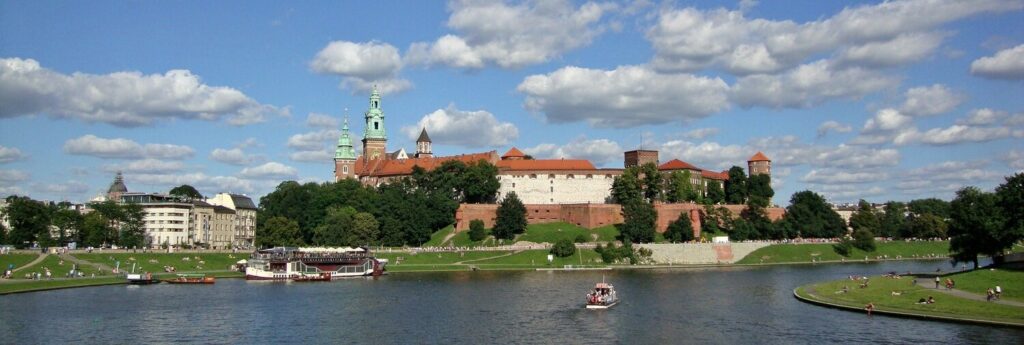
Krakow, Poland
A Digital Nomad Guide to Krakow
Poland is the jewel in the crown of central-eastern Europe and Krakow is one of the most beautiful and fascinating medieval cities in Europe. The city dates back to the 7th century and it is the oldest and second largest city in Poland; Kraków was the medieval capital of Poland until 1596 and has traditionally been one of the leading centres of Polish academic, economic, cultural, artistic life and is one the main economic hubs in the country. Cited as one of Europe’s most beautiful cities, its Old Town was declared the first UNESCO World Heritage Site in the world.
The city of Krakow is home to about 780,000 people, with approximately 1.4 million additional people living in the adjacent towns.
Krakow lies in southern Poland about 100 km (62 mi) to the south from the Tatra Mountains which constitute the natural border with Slovakia and the Czechia; 230 km (143 mi) west from the border with Ukraine, about 600 km (160 mi) from the Baltic Sea. The vast majority of the Krakow’s population is native Poles, but there are also significant communities of Slovaks, Jews, Ukrainians, and Armenians. There is also a growing expatriate population, attracted to the city by its thriving economy and private sector. Although Polish is the official language, in Krakow you can hear Yiddish, Hebrew, Slovakian, or Ukrainian. English is widely spoken fluently amongst the younger generations, and by many people working in the financial or economic centre of the city.
Its magnificent architecture, lively atmosphere on the streets and squares of the city, amazing food and the diverse nightlife make the city attractive to tourists from all over the world.
Due to Covid-19, there have been many restrictions of social distancing introduced to most of the public places. The guide is written in accordance with the recent rules and regulations. Recently coffee shops, cafés, restaurants have been opened only for take-away service. When the restrictions are loosened, these places can be visited by a limited number of people who stay inside. Before you decide to visit any place, we recommend checking online the opening conditions.
Living in Krakow Overview
| $7.35 | |
| $2.94 | |
| $2.88 | |
| $0.96 | |
| $0.60 | |
| $1.47 | |
| $202.62 | |
| $16.28 | |
| $27.70 | |
| $776.75 |
Currency: Indonesian rupiah (Rp)
[erw_exchange_rates_widget lg=”en” tz=”0″ fm=”IDR” to=”EUR,USD,GBP,AUD,JPY,RUB” st=”primary” cd=”” am=”15000″][/erw_exchange_rates_widget]
ATMs
Max Withdrawal: Rp 3,000,000
Withdrawal Fee: Rp 30,000 – Rp 50,000
Use of Credit Cards: Mostly Cash
Average Temperature °C
Average Temperature °F
Average Rainfall
Average Rain Days
Daily Sunshine Hours
Digital Nomad Personal Experience in Krakow
Walking through Krakow is like strolling through your very own open-air museum. Around every corner you find something of enchanting, whether it be a beautiful building or a cool food truck selling traditional Polish delights. Since my childhood, I kept visiting Krakow pretty often, but there was this one time in December in 1999 when I was most captivated by the city and decided that one day I want to live there just to enjoy its charm and ambience. It was not until autumn 2016 when I got an opportunity to move there for a few months to attend a course and work as a digital nomad. Even though so much time passed, the city did not disappoint, I think it was even better than I remembered! That time was filled with history, culture, food, and great new people.
Here is the most updated Warsaw city guide for digital nomads who consider this city as a new base in 2021.
Work in Krakow
As a digital nomad in Krakow, you should not worry much about the Internet access.
The average fixed broadband speed in Poland is 120mbps for downloads and 41mbps for uploads, with mobile speeds coming in at 42 mbps and 10 mbps respectively.
There are approximately 1350 hotspots all over Krakow located in bus and tram stops, hotels, cafés, restaurants, shopping centres, city centre, libraries, parks, railway stations, hotels, and most of them are free of charge.
In order to have a local mobile Internet, you have to get a local pre-paid SIM card. There are more than 10 mobile operators and you can buy your starter pack in any kiosk, newsagent or at a mobile operator directly. Prices start from as low as 1.30 USD (5 PLN) and you already get a packet of minutes, messages and some Internet data. When the data finishes, you simply buy a recharge card. Your place you stay should already be equipped with WIFI.
Best Places to Work in Krakow
Co-Working Spaces
The best option for finding a comfortable and reliable place to work, is to look at coworking spaces. Luckily Krakow offers some great coworking spaces across the city.
Yolk Workspace & Community
Located in the centre of Krakow, Yolk is a flexible workspace that is focussed on an international expat community. Private offices, coworking rooms and a cafe-inspired workspace are spread across three floors of a traditional Cracovian townhouse with a cosy, well-designed interior. Events regularly take place at Yolk for the English speaking startup community. Day passes from 75 PLN as well as weekly and monthly memberships available.
Galeria Bronowice
Galeria Bronowice (Bronowice Gallery) Conveniently located in a shopping centre (not an art gallery), the place offers now 2 co-working spaces which are free of charge. They are equipped with comfortable desks, good wifi and a photocopy machine (charges apply).
Chilli space
Chilli Space is a network of 7 offices scattered around the city in all important and convenient locations. The open coworking is a flexible plan which allows you to use the place to work in any of their offices located in the city centre which you can access 24/7 and it costs 125 USD (500 PLN) per month.
Laptop friendly cafés
Here are some of the most popular and laptop friendly coffee shops among digital nomads and freelancers:
Tektura
This Brooklyn-like café has everything one can ask from: great baristas who do not fear any coffee challenges, a very good WIFI connection, plenty of plugs, board games, cosy sofas, and various working spaces anyone will find comfortable.
MAK Bread&Coffee
One of the most fashionable cafés in Krakow is located in Kazimierz. The digital nomads will definitely find their comfortable working space either at a long communal table, on numerous cosy chairs and couches, or at a bar. The stylish interior, strong coffee and reliable WIFI make this place an ideal laptop friendly spot.
Cytat Café
This literary café is one of the most inspiring cafés in Krakow: its name means ‘Quotation Café’ and it is filled with books, its walls are all covered with quotes, and coffee is served along with a printed quote. It is an ideal place to peacefully read a book, do some work or meet up with a friend.
Cheder
This café located in a former prayer house is one of the best laptop-friendly places in town: it is peaceful, has delicious Israeli coffee, very good WIFI, and lots of comfortable space to work. Besides, it is also a cultural centre which promotes Jewish culture in multiple ways.
Fitagain Café
Even though the café is perfectly located in the Old Town, there is a sense of intimacy there. If you have work to do, a reliable WIFI, comfy seats, lots of plugs and healthy breakfast and snacks options will be undeniably motivating.
Pauza
This excellent place to work, have business meetings or simply chill and enjoy great food, cocktails or cultural events, is also worth visiting thanks to its award-winning building called MOS (Malopolska Garden of Arts).
Libraries
If you search for a quieter place where you can work in peace and without spending money, libraries are what you look for. There are around 80 libraries and reading rooms in the city where digital nomads can work from. A very modern and popular branch is Arteteka which lends DVDs, comics, board games, video games and other media, offers computers for public use, and is laptop friendly.
Best Places to Live in Krakow
Best Neighborhoods
The Krakow territory is divided by the Vistula River. The city is composed of 18 districts which have their names as well as Roman numerals. Twelve regions which are located on the right (northern) side of the river are considered to be more interesting than the remaining six. Each of the districts however retains its original features.
Stare Miasto – Kazimierz
Kazimierz is a part of the Old Town neighbourhood but it has a cool and Bohemian vibe comparable to London’s artsy Soho. This old Jewish Quarter, which blends industrial and Gothic styles, with synagogues and artisan beer houses on the same street, is filled with cafés, bars, restaurants and bistros. Despite the area being well-known for its Jewish culture and more Israeli eateries than anywhere in the city, the culinary offer actually comes from all over the world. Prices of food and rent there are a bit on a higher side since it is a popular spot for tourists. However, it is very convenient for living given the close proximity to so many places, so you rarely have a need to use public transport: many famous attractions, great parties’ spots, points of service, cultural festivals and events all year round, great street art, the river and its boulevard to have your dose of strolling, jogging or biking, atmospheric and inspiring cafés to work from or quiet ones to escape into a book, any many more.
Podgórze
When you take a short walk from Kazimierz over the so-called Love Bridge to the left bank of the Vistula River, you will reach the Podgórze neighbourhood. If you wish to stay in a place which is a bit cheaper, quieter, less crowded, but still cool, laid-back and well communicated with the centre, this is the right place. The area which spreads out along the banks, even though is less touristy, more of a post-industrial place, with a dark history, is continuously developing an image of one of the city’s more interesting districts. Nevertheless, it has gone ahead from the past and now Podgórze is a liveable, cultural and gastronomic top area in the city.
Kleparz
Kleparz is a chilled residential neighbourhood situated north of the city centre. Thanks to its suitable vicinity to Stare Miasto residents can easily enjoy the city’s most famous landmarks, but at the same time crowds of tourists, noise and other minor inconveniences are far enough to live in a laid-back environment.
Kleparz is recommended for digital nomads with families or those who love being closer to nature – the neighbourhood has a very good connection to the city centre, lots of parks and greenery, historic landmarks, excellent eateries, and a tranquil, vibrant and friendly ambience.
Nowa Huta
The largest district in Krakow is also the most populated. Nowa Huta is one of only two planned socialist realist settlements or districts ever built. Constructed near Krakow as a utopian ideal city – a bustling working-class enclave – one of the most renowned examples of deliberate social engineering in the entire world – its street hierarchy, layout and certain grandeur of buildings often resemble Paris or London. This concrete suburb at first does not seem to be the first, second or even third choice of the neighbourhood to stay in. It may seem to be improbable but the area has been rated as one of the best in the city for the last 3 years. It is emerging as one of the laid-back and leisure hubs in the city. It is full of greenery and parks, very well connected with the centre, both by road or public transport, and offers a rich cultural calendar. As many of the areas, this district also feels like an open-air museum full of history.
Find an Apartment in Krakow
Looking for an apartment while living in your own country and speaking your language is usually a challenge for many. Yet, moving abroad and finding a place to stay in a foreign country, often when you do not speak the local language, can be very stressful and time consuming. Unless you are relocating with your company which deals with all the relocation hassle, you probably start searching the internet and rent a new place while still being abroad. There are expat groups on Facebook like “KraKow/Poland Expats/”and “Krakow Expats” where you can connect with others and ask for a recommendation of a place. Then on groups “Krakow Apartments 4 Rent”, “Apartments For Rent Krakow City”, “Foreigners Krakow / flats / accommodation” and “Krakow Housing, Rooms, Apartments, Sublets” you can find offers of accommodation in English. You can also contact a real estate agent (as the number of foreigners is growing, you will most likely be served in English). Also, many companies help in finding an apartment and in the relocation process.
Other websites with English advertisements are among others: rentflatpoland.com, nestpick.com, rentberry.com, housinganywhere.com. The presented offers vary from individual rooms in a shared apartment, through affordable flats in any part of the city, to high-end apartments or houses – there is a room for everyone!
Prices start from around 110 USD/month for a single room in a shared flat. A one-bedroom apartment in Krakow costs 350 – 520 USD/month. A two-bedroom apartment costs between 490 and 750 USD/month. A usual long-term rental period in Poland is 12 months. An additional expense could also be considered the two- or three- month deposit that many of the landlords ask for when you move into your rental apartment. Another cost to consider are utility bills which may (but not must) consist of hot water, heating, internet, electricity, and can amount to 50 to 120 USD/month. All the details should be included in the contract: personal data of a landlord and a tenant, duration of rent, the monthly pay, payment deadlines and method, cost of utilities, maintenance of the property and its cost (it should be a landlord’s responsibility), furniture and appliances and their state, a deposit, termination of the contract, and a form of return of the deposit. If you own a pet or consider having one, confirm with the landlord that you are allowed to bring it to the apartment, and also include this point into the contract.
One of the things should be avoided in order not to get scammed, is to not use cash for any payments but a wire transfer. What is more, if you want to make an appointment to view an apartment, you have the right to view it without any additional charges. Do not pay any fees upfront if you have not seen the apartment first. Try to avoid offers where someone is subletting their place, even for a short time, otherwise you can be evicted.
If you know you are going to share an apartment with other flatmates, ask the landlord about them. Also talk with flatmates about the landlord, your co-living conditions, the flat itself, etc.
Cheap Places to Stay in Krakow
If you are just getting started in Krakow as a solo digital nomad, there are some great low-budget accommodation options to that will ease your start and the websites where you can search for them: noce.pl, nocowanie.pl, meteor-turystyka.pl, hotelestudenckie.pl.
Couchsurfing: According to the couchsurfing.com website, there are roughly 40,000 hosts in Krakow willing to offer accommodation free of charge. This may be a temporary solution for solo newbies in town who would like to get to know some locals at the beginning of their adventure in Krakow.
Hostels: There are numerous hostels around the city, many of them conveniently located in the city centre. Most hostels offer multiple types of accommodation from dorms to individual rooms to apartments. Prices start from 4 USD person/night.
Staff hotels (hotele pracownicze): This is a type of accommodation where employees stay when they are delegated to work away from their place of living. Places are clean but amenities and facilities are very basic. Usually you can negotiate the price the longer you stay. Prices start from 4 USD person/night.
Private lodging (kwatera prywatna): It is an individual room in someone’s private house. You stay and share amenities and facilities with the hosting family. Prices start from 7 USD person/night.
Bed & Breakfast (pensjonat): This option offers generally individual rooms along with breakfast. Prices start from 11 USD person/night.
Student dorms: Individual rooms offered there during summer holidays and on weekends during the academic year if available. Prices start from 15 USD person/night in a double room, and 23 USD per night in a single room.
Other options include accommodation found on websites like Airbnb, booking.com, hotels.com, etc.
Krakow Visa
Poland is a party to the Schengen Agreement and a member of the European Union. Digital nomads from an EU, a Schengen Area country and a few other associated European countries, can enter and leave Poland easily under the free movement of people, with no border controls between member states. It is also possible to settle here for an unlimited amount of time.
Some nationals who come from outside of the EU and Schengen Area (e.g., Canada, USA, UK, Australia, Brazil) may enter the Schengen states for short stays (usually 90 days in any 180-day period) without a visa. However, there is a list of other countries whose citizens have to apply for a tourist visa which is usually valid for 90 days.
It is worth mentioning that once a person already holds a visa for another Schengen Area member state, then this will remain valid until its expiry date when entering Krakow. The passport needs to be valid for at least 3 months beyond return date, otherwise one may be refused entry.
Depending on the country where you are from, there are varying rules for the access, so be sure to look up the specific requirements for your case before you travel on the website of the Polish embassy in your country.
Due to Covid-19, temporary restrictions have been introduced on the entry of third-country nationals. However, regulations change very often so before you decide to travel, please check the recent updates online for example on https://www.poland.travel/en.
Culture and Food in Krakow
Cuisine
Kraków has been acclaimed the “European Capital of Gastronomic Culture” for 2019. There are plenty of restaurants of all types of cuisines to enjoy. Some of the must-try Polish dishes are: pierogi – dumplings with various fillings; kiełbasa – local sausages; bigos – sauerkraut and cabbage stew with pork and/or kiełbasa; naleśniki – thin pancakes with almost any filling you can think of; żurek – a unique sour rye soup with sausage, potatoes, and eggs; placki ziemniaczane – potato pancakes, usually served with goulash or sour cream (and salt or sugar); kotlet schabowy (breaded pork cutlet); gołabki – rolled cabbage leaves stuffed with rice, onions and beef, served in tomato sauce; zapiekanka – the most beloved street food, is a baked open sandwich with different toppings
Milkbars are where you can get the Polish food at its best – it tastes like at home and it costs next to nothing.
Culture
Krakow, the most historic city in Poland is also the most cultural, and was officially acclaimed as the European Capital of Culture back in 2000. The cultural DNA of the city is easily seen on every corner: there are 15 theatres and many theatrical groups, more than 50 museums, many art galleries, and a busy festival calendar with annual events like the Street Theatre Festival, Jewish Culture Festival and the Kraków Film Festival, Dragon, Dachsund or Lajkonik Parades, the Pierogi Festival and Juwenalia (students’ festival). Another type of culture Krakow is famous for, is café culture. It is said that it outnumbers cities like Vienna or Paris when it comes to the number of cafés per square meter. Most cafés are located in Kazimierz, but you can find great spots all over the city.
The Manggha Museum of Japanese Art and Technology founded by the renowned film director Andrzej Wajda and Krystyna Zachwatowicz-Wajda, hosts exhibitions of Japanese graphic art of different kinds. They established the internationally acclaimed Kyoto–Kraków Foundation. Apart from the artistic section, the museum contains the Japanese Language School, The Manggha Museum Library (copies relevant to Japanese culture and art), the Tea Pavilion, a café, and a shop.
Zdzisław Beksiński Gallery contains many works of the internationally recognised and controversial 20th century painter Zdzisław Beksiński, who is known for his large and emotionally-charged canvases depicting surrealistic figures and apocalyptic sceneries.
Galeria Plakatu (Polish Poster Gallery): is the only gallery in Poland specializing only in Polish commercial and promotional posters in the field of culture, theatre, film, music, and literature. The gallery possesses about 2,500 poster titles by almost 200 Polish graphic artists, painters and designers.
The city has been also honoured by UNESCO as a global City of Literature: it is home to many great writers, as well as world-class bookshops.
Kurant Bookshop: this little bookshop specialises in all things musical: instruments, signed pictures of jazz greats, a grand piano, stacks of CDs and musical scripts, just a few to mention. There is also an on-site little café.
Massolit Books & Café: it is perhaps the best independent English-language bookshop in Central Europe, partially thanks to the vast variety of new and used books on all subjects and specialising in Polish, East European and Jewish literature in English (more than 20,000 titles), and partially thanks to the unique café atmosphere with regular literary events and readings.
Jarden Bookshop: sells mainly literature related to Jewish culture and heritage. There is a big section on Holocaust-related works, along with a multimedia collection of Jewish music and audio, all of which comes in different languages, from Arabic to Hebrew to English.
Krakow Nightlife
One legend has it that there are more bars per square meter in Krakow’s Old Town than in any other town in Europe! The main hedonist streets are Florianska (Old Town) and Szewska (Kazimierz) which become huge party places of all sorts of music styles between Thursday and Saturday nights. You will most likely encounter weekend cover charges ranging from 1.30-5.20 USD (5-20 PLN) at most venues. Some clubs have a nightlife dress code – it is safe to choose a casual and semi-casual style outfit.
If you want to party in the real Polish style, visit one of “vodka and snack” bars. They are perfect for fast and cheap drinking before going to some club.
As most bars are hidden underground, those who are not acquainted with the city often decide to join a renown pub crawl to meet new people, discover the city, and to locate bars and discover their gems.
Here are some of the best.
Alchemia: it has long been acclaimed as the finest bar in the city with concerts for every type of music lover. Alchemia consists of many tight rooms filled with vintage furniture. The entrance to one of them leads… through the wardrobe!
Święta Krowa: it is one of the most laid-back bars in town with an Eastern-inspired interior and a cosy bar atmosphere, it hosts club nights playing electro, house, techno, and drum’n’bass.
Prozak 2.0: is one of the oldest underground clubs in Krakow with one of the best sound systems in town. For many years it has featured an amazing line-up of top DJs playing house and techno.
Szpitalna 1: this one of the best music venues in Krakow is home to Poland’s finest and eclectic DJs playing house and drum’n’bass music during the weekend. During the week, you can also enjoy jazz, open mic nights, and comedy.
Frantic: it is one of the first clubs in the city, probably known to every party-goer in Krakow. It has selected clientele, excellent service at four bars, air-conditioned interior, VIP room and high-level music. The club offers regular themed parties on selected days and is visited by famous DJs.
Harris Piano Jazz Bar: the club was appreciated by the British Guardian and ranked among the best jazz clubs in Europe. It offers great music, professional service, and inviting interior.
Mercy Brown: the bar with no outside signage is actually Kraków’s best cocktail bar. The bartenders are artists who make their own tinctures, offer top-shelf liquors and handicraft drinks. The place has a decadent 1920s Parisian atmosphere and electro-swing soundtrack, or live jazz on Sundays.
Shine: one of Kraków’s most exclusive and fashionable clubs with modern design, delicious cocktails, playing mostly house and r’n’b by top DJs. Located in a former cinema, this enormous and spectacular space features 3 bars, 3 dancefloors (one is VIP).
Hevre: this spacious club occupies a vast 19th century Jewish prayer house. By day, Hevre serves as a café/restaurant and a great place to chill with a good book or laptop. After dark, the crowds pile in for DJs and dancing upstairs and downstairs.
Klub Papuga: it is a large, welcoming and colourful gay club open to everyone. It hosts weekend dance parties and events, including drag shows, queer bingo and karaoke. It consists of two dancefloors, two bars, a smoking area and a garden.
Unusual options for a night out:
Boat party: during a 2-hour river cruise down the Vistula River, you are able to take in sights and enjoy unlimited beer, gin, vodka and mixers, and an after-party pub crawl;
Cybermachina: it is a place for gamers, board game lovers, and virtual reality fans, with a good selection of tasty booze;
Gorzko gorzko!: named after the cheer (“Bitter! Bitter!”) used to oblige newlyweds to kiss. Each Polish wedding-style party includes a welcome champagne, Polish snack table, photo booth, wedding music obviously, and games and activities throughout the night.
Stary Port: Krakow’s only sailor bar. The interior has a cosy nautical theme look, and there is live music with sea shanties.
Społem Deluxe: partying in Polish retro style: an old-style interior taken from Polish Republic times, good drinks, a lot of Polish and disco music, and a DJ booth located in an old Nysa van.
Teatro Cubano: the place feels like you are walking, or rather dancing along the streets of Havana. Enjoy delicious and cheap Cuba Libres, live concerts, Latin dance shows, learn salsa, sing and dance the whole night.
Absynt Café: this Belle Époque-inspired bar is mostly about absinth, but you will find other alcohols as well. The bartender explains the whole process of serving a glass of fine Green Fairy, along with elegant Absinthe spoons and dashes of raw sugar and cold water.
Gin Mill: Kraków’s first bar serving almost exclusively gin. It may also be the city’s smallest cocktail bar, with 10 seats in 18 square metre space. Here a barman will introduce you and let you sample over 100 different types of gin on offer.
If you like not only dancing but also singing, karaoke bars will be a great choice for you. These are said to be the best in town: Coyote Bar and The Legends Music Club.
For avid sports fans who love to enjoy watching your favourite sport with other enthusiasts, sports bars with big screens, great sound system and the cheering atmosphere, are scattered all over the city.
Krakow’s got the nightlife!
Things to do in Krakow
Krakow is such an interesting place to visit that people come and visit it all year round.
The most pleasant times to visit the city run from May till the end of June because it is the warmest and sunniest period of the year, and September-October, when it is still warm and sunny, and popular places are not crowded with tourists anymore.
Contrary to what you may have heard, Krakow is not only about history and UNESCO heritage. The city offers loads of recreational facilities of all sorts. Apart from venues where you can practice sport, there are countless options for cultural, recreational, educational and fun activities, both indoors and outdoors.
Free Walking Tour
Free Walking Tour this is a great option if you are new to Krakow and would like to take a quick guided tour around the most interesting areas in this remarkable city, uncover their hidden histories, and meet new people. They take place every day and are free but it is good to tip the guide.
Kościuszko Mound
Kościuszko Mound built in commemoration of the Polish national hero Tadeusz Kościuszko, is a popular recreational destination for locals to walk 1,6 km along the serpentine path to the top which rewards with a panoramic view of the Vistula River and the city. On clear days you can even see the Tatra peaks.
Florianska Street
Florianska Street this first most popular street in Krakow and third most prestigious street in Poland is the city’s major tourist attraction which nowadays features restaurants, cafés, clubs and shops with souvenirs. It is a part of the so-called Royal Route and leads from the beautiful Polish Gothic St Florian’s Gate and the Old Town.
Nowa Huta
Nowa Huta on a private tour: discover your inner communist and seize the spirit of this unique neighbourhood in a private tour: eat typical Polish food in a “milk bar” canteen, see how people lived 60 years ago, visit a bunker, and travel in a vintage Fiat 126p or a vintage Trabant automobile.
Forum Przestrzenie
Forum Przestrzenie this one the coolest, most original and exciting places in the city is located in a huge rundown Forum Hotel. In summer you can chill in a beach-like ambience and entourage with delicious food and drinks, or move your body at weekend DJ parties. Indoor or outdoor lounging with a river view is available all year round.
Observation Balloon
Observation Balloon for thrilling panoramic views, take a scenic lift to a height of up to 150 metres in this massive balloon located at the riverbank directly in front of Forum Przestrzenie.
HEXspot café
HEXspot café it is a top gaming place in town of this type. It offers a wide variety of boardgames, card games, quizzes, etc, nice selection of beers and pub-like food.
Krakow Arcade Museum
Krakow Arcade Museum It is actually a place filled with over 100 vintage video games from the 1980s and 90s, including pinball machines, shooting games, driving games and many of popular classics.
Axe Nation
Axe Nation it is an axe throwing club for adults, great if you want to get out some stress or aggression in a primal way.
National Museum in Krakow
National Museum in Krakow it consists of 12 branches spread around the city. In the main building you can admire a famous work of art by Leonardo da Vinci’s The Lady with an Ermine, which is a true crown jewel of Poland’s art collection.
WOMAI Museum
WOMAI Museum World Of My All Inspirations: this sensorial and scientific museum is an attraction rich in surprises. The two exhibitions that we propose to visitors present two opposite worlds: “Into the light”, where you use all the spectra of senses, and “Into the dark”, where the only thing guiding you is the voice of the guide and your intuition.
Schindler’s Factory
Schindler’s Factory for many people known mostly from the film Schindler’s list, the Oskar Schindler’s Enamel Factory, is a world-class museum. Presented exhibitions cover the story of the Schindler Jews, they depict Krakow during WWII, and also show the history of Krakow as a city.
MOCAK Museum of Contemporary Art
MOCAK Museum of Contemporary Art this art gallery located in a devastated part of the Schindler’s factory premises, is dedicated to showcase and support contemporary art and artists, both Polish and international.
Krakow Pinball Museum
Krakow Pinball Museum Once you enter the museum, you can learn more about the history of pinball and play all the 30 restored machines available
Wawel Hill.
Royal Castle
Royal Castle once home to the Polish kings and queens, in terms of architecture it is an impressive miscellany of Gothic, Renaissance, Rococo and Romanesque styles. It has great museums, court rooms, and a crown treasury which serve as a testimony to its former glory. The Wawel Royal Castle and the Wawel Hill make the most historically and culturally significant site in the country.
Wawel Cathedral
Wawel Cathedral this more than 900 years old cathedral, is the most important church in Poland. It is the national sanctuary which served as the coronation site and the main burial site of the Polish monarchs.
The Dragon’s den
The Dragon’s den at the base of the Wawel Hill, there is a 12 million years old cave located which, according to a legend, was home to a dragon (Smok Wawelski) who was about to devour a princess but got tricked by a simple shoemaker and the princess was saved. The statue of the dragon blows fire out of its mouth every few minutes. Open May-October.
Sukiennice Cloth Hall
Sukiennice Cloth Hall it is a beautiful Renaissance building in the centre of the Market Square which is considered by some historians to be the oldest shopping centre which was the source exotic imports and exported local goods. Nowadays in the underground you can see the archaeological excavations of medieval houses and everyday objects; on the ground floor there are stalls with jewellery and local souvenirs and a café, and the first floor hosts the 19th Century Polish Art Gallery, by some called the Kraków’s Louvre.
St Mary’s Basilica
St Mary’s Basilica it is a red brick church on the Market Square dating back to the 14th century and it one of the finest examples of Polish Gothic architecture. Inside there is a wooden altarpiece carved by Veit Stoss (Wit Stwosz), which is one of the largest Gothic masterpieces of this type in Europe. Every hour, from the highest tower of the Basilica, a bugler, who is an active member of the fire brigade, plays a trumpet call – the Hejnał Mariacki. The signal is played 4 times every hour, 24 hours a day, every day of the year.
OUTSIDE THE CITY.
Wieliczka Salt Mine
Wieliczka Salt Mine This UNESCO attraction which is one of the oldest uninterruptedly operative salt mines in the world (more than 700 years), is just a short drive away from Krakow’s city centre. You will find there amazing natural, historical and artistic wonders on a global scale made of salt hundreds of meters below ground. The most spectacular place is St Kinga’s Chapel – the underground cathedral is a truly magnificent marvel because everything, like chandeliers and replicas of Da Vinci’s Last Supper, are carved straight into the salt. What is more, on the premises of the salt mine, there is a Salt Mine Health Resort – an underground rehabilitation centre. Aside from day treatments of respiratory system diseases, the resort also offers overnight stays in the therapeutic microclimate underground chambers.
Auschwitz-Birkenau
Auschwitz-Birkenau About an hour drive from the city centre, you may find yourself in one of the darkest, emotional and moving, but also informative and eye-opening traces of the horrors of the WWII and the Holocaust.
Best Time to Visit Krakow
The climate of Poland is temperate and you can distinct four seasons during the year, each of them can be highly enjoyable. The climate is characterised by warm (sometimes very hot) summers and cold winters, with temperatures often below freezing. Snow can be found in the mountainous region in the south of the country from December until April. Rain falls throughout the year. On average, there are around 1,400 sunshine hours per year and snow cover persists on average for 60 days a year.
The city has warm, sunny, sometimes stormy summers. The temperatures are pleasant and suitable for outdoor activities, although sometimes there can be rains and thunderstorms. Average temperatures in summer range from 65 to 69 °F (18.6 to 20.4 °C). Every now and then there can be short heat waves, with temperatures sometimes exceeding 86°F (30°C) usually in July. To bring relief during the hottest days, the local government installs plenty of little water fountains and sprinklers throughout the city
Mostly sunny autumn can be unpredictable, prone to sudden weather changes and mist. But usually when it starts, the weather is enjoyable, days are generally sunny and warm but nights can get really chilly. This time in the city is very beautiful and picturesque, with colourful leaves on trees in parks. However, the closer winter gets, the more rainy, chilly and grey days come.
The winter season is cold and usually cloudy. Snowfalls are frequent, but generally not abundant. The average temperature in winter oscillates around 32 °F (0 °C). However, in extreme cases the temperature can drop to even 5°F (-15 °C). Krakow’s proximity to the Tatra Mountains means that the city often experiences a halny blowing or foehn wind, which can cause temperatures to rise rapidly. This can occur even in winter, where although the average temperature ranges from 28 to 32 °F (−2.1 to 0 °C), it can sometimes shoot up to as high as 68 °F (20 °C).
In spring months (March-May), the weather is lovely and pleasant. The temperatures are mild, there is plenty of sun, the city becomes livelier and nature rebirths after a cold winter. Trees get beautifully green, parks, gardens and streets are filled with flourishing colourful flowers. Yet, the weather can be also changeable with lower temperatures, rain, rarely snow.
Krakow for Families
Krakow is a very family friendly city in terms of keeping the whole family entertained, regardless of age. Parks, festivals, playgrounds in every corner, attractions for kids, and many events nearly every weekend. Here you can find some of the ideas for indoors and outdoors activities.
Dziórawy Kocioł (The Leaky Cauldron) is a Harry Potter-inspired café ideal for witches, warlocks or any pupil of Hogwarts to practice spells, play boardgames, purchase wizard wands and magical gadgets, and enjoy occasional magic shows.
If the weather is discouraging to spend time outside but your kids seem to have excess of energy, there are several places where they can steam it out:
GOjump is a huge jumping-centre with trampolines, zones for fitness classes, acrobatics, and a giant ramp for skaters. The place is family friendly from the age of 4.
GOkidz! the adventure park is just for kids (aged 1-18). They can take part in a game with play stations and become cosmic heroes – they get electronic wristband upon entry which they use to activate multimedia stations, earn points, develop their ‘superpowers’ and win prizes.
In GOjump MEGApark you can go at their ‘ninja warrior’ obstacle course, play acrobatic dodgeball with friends, have a high-flying dunk contest and more.
GOair features an inflatable bouncy castle obstacle course wonderland for all ages (4 and up).
Anikino is a colourful wonderland for kids up-to 12, full of ball pits, zip-lines, mazes, a climbing wall, bouncy castle, adventure playground and more.
In Laser Park you play laser shooting games in a tag arena with mazes & lights, where a computer system registers hits from the virtual bullets.
For those who want to learn something new through entertainment, the city also has a vast offer:
HistoryLand attempts to bring Polish history to life via 10 detailed multimedia displays with LEGO. Each display offers some sort of animation, interactive play, or VR technology.
Klockoland is a family attraction for all LEGO and/or robot lovers, where you can control robots and play with them or you can learn how to build your own robot.
Engineering Museum is one of the city’s best museums when it comes to interactive exhibits that will engage kids, in spite of undergoing major renovations these days.
Stanisław Lem Science Garden is an interactive, educational park for kids named after local sci-fi author Stanisław Lem. This science park consists of different stations (with explanations in English in Polish) engaging kids in optical illusions, acoustics and the laws of physics (May-November).
In the Museum of Live Butterflies you can admire a few dozen exotic butterflies from various continents.
In Papugarnia Amazonia you get a chance to observe, interact with, and even feed upwards of 40 brightly coloured, beautiful birds from over 15 different species.
Obwarzanek Museum is interactive and educational – you learn more about this snack, why is it so unique, how to make it and you can even bake it on your own.
For some leisure family time together along with some sightseeing, take a horse-drawn carriage ride around the Old Town, e.g., from the market square where the carriages line up, to Wawel Hill.
When it comes to education, there are several options for foreign language speaking children. The most popular language is English, but there are schools with French or German in their curricula. In Krakow you can choose from several English-speaking nurseries which are usually connected with pre-schools/kindergartens, e.g., Trilingual Nursery and International Pre-school or KIDS&Co. kindergartens and nurseries.
Then there are 6 English speaking schools which offer education from the age of 2.5 to 19, among others British International School of Cracow, Open Future International School or Da Vinci’s International Schools.
Living in Krakow
Krakow Transportation
Krakow is the second biggest city in the country and yet it seems quite small. It does not take you long to get from one side of the city to another and the traffic is not as infamous as in Warsaw.
Though there is no underground metro in Kraków, the city boasts a comprehensive and easy-to-use public transportation system, which some visitors will not even find necessary thanks to most attractions being within easy walking distance of one another. The city is known for walkable neighbourhoods and easy-to-navigate historic districts.
Public transport is based on a fairly dense network of tram and bus routes operated by a municipal company, supplemented by a number of private minibus operators. A lot of the city’s historic area has been turned into a pedestrian zone with rickshaws and horse-drawn carriages but trams run as well.
Krakow has an integrated bus and tram system which runs from 05:00 – 23:00, with night trams and buses continuing less frequently after that. As for the public transport tickets, there are tickets for two zones called Strefa I and Strefa I +II. You can buy either single-fare/double-fare tickets or tickets for a specific time period (varying from 20, 50 or 90 minutes up to 24, 48, 72 hours, etc.). If you plan to travel, consider getting a monthly personal ticket for the whole network. The price is 38 USD (148 PLN) for zone I and 40 USD (158 PLN) for zone I+II. There are various discounts considering the age or profession, as well as the length of the pass.
Tickets can be bought from special machines nearby the tram and bus stop or onboard (but you need to have a small change); do not forget to stamp it immediately after getting aboard. Also, you can use mobile apps to buy tickets for buses and trams. In Kraków, tickets can be purchased through mPay, Mobilet, and SkyCash.
If you want to travel faster to some of the suburbs, choose the local trains. Railway connections are available to most Polish cities, e.g., Katowice, Czestochowa, Szczecin, Gdynia and Warsaw. International destinations include Bratislava, Budapest, Vienna, Prague, Belin, Lviv, Kyiv and Odessa (June-September). The main railway station is located just outside the Old Town District and is well-served by public transport. To get to Warsaw almost in the blink of an eye, take a high-speed train Pendolino.
Next to the railway station you will find an integrated bus station: they operate on local, national and international level. There are Europe-wide coach services like Eurolines (France, Italy, United Kingdom, Scandinavia, Central Europe), Ecolines (Russia, Baltic states, Central Europe and Balkans). More budget friendly services across Poland and neighbouring countries offer FlixBus.
The airport in the west of the city centre, operates flights on international and domestic level by regular and low-cost airlines. Apart from travelling to most European countries, you can also easily get to North America or Asia. However, more and more low-cost airlines have added and keep adding connections to Krakow. To get from the airport to the city centre, you can either take a train or a direct bus.
For now, the city does not have a public bike-sharing system but there are many points where you can rent a bike per hour or day to enjoy the city from a two-wheeler perspective.
Driving a car in the city centre is highly unrecommended. Traffic can be pretty heavy at times, parking spaces are scarce and are rather expensive. There are also rules around local ‘driving zones’ that confuse even long time residents. The taxis and Uber are cheap and it makes more sense to use them. It is better to book one ahead than hail it on the street.
Fitness and Health
There are plenty of options to keep fit in Krakow. You should not have too much difficulty in finding a group, club, or facility to join in if you like company. Football is one of the most popular team games, with many teams at various different levels. Besides that, yoga, basketball, ice hockey, tennis and volleyball are probably the most favourite sports of the city dwellers.
You may also find it convenient that almost every shopping centre contains a gym. Popular fitness clubs in the city: Calypso, Cityfit, Saturn Fitness, Pure, or McFit. A monthly pass starts from 21 USD (80 PLN).
Locals enjoy cycling in Krakow – there are more than 230 km of cycle lanes around the city. For those who prefer to dip in water, you can choose from more than 30 swimming pools, both indoors and outdoors, including Kraków Water Park. Some pools are public, some belong to hotels. In summer, the Bagry lagoon, an artificial reservoir, becomes the most popular swimming, sailing, sunbathing and recreation destination within city limits. Surprisingly, in the quarry of Zakrzowek you can get PADI qualifications
Krakow is proud of its greenery. You can find parks everywhere in the city, since there are more than 50: there are vast meadows of Błonia and the famous Planty Park where you encounter hundreds of runners, joggers, dog walkers, rollerbladers, cyclists, and occasional open-air festivals; while the Jordan park is like an outdoors gym with football, volleyball and basketball pitches, a skate park and an ice park in winter.
The High Tatra Mountains in the close proximity make a great destination for hiking all year round and skiing in winter.
Krakow People
Polish people would describe Cracovians as meticulous, frugal, nonchalant, a bit reserved, but also patriotic (most of them would not like to move out of the city), sociable and life-loving. Apart from that, other features are common for the whole nation.
When meeting others, Polish people are courteous, polite and very punctual. In most situations they shake hands with everyone upon arrival and when leaving, with family and friends greet by kissing cheeks three times and/or hugging. Some older gentlemen tend to place a kiss on a woman’s hand when greeting her. In these terms, Poles are quite old-school, and it is not a stereotype. Usually every meeting starts with small talk before getting to the main point. Keep in mind that taboo conversation topics include religion, history or politics because they all spark a lot of controversy in Poland. It is advisable to choose the weather, traffic, or health issues as safe subjects for small talk.
Poles are usually very open, friendly, hospitable, sociable (they are open to talk with strangers) and have a good sense of humour. However, they are very fond of complaining. Complaints can be related to medicine, politics, prices, bus schedules, or just weather. What is more, they can be quite sentimental. They are very close to each other and are always ready to help those in trouble. Another important value for many Poles is their family. Polish families usually tend to be large and have strong bonds, even if they live in different places.
Although Poles are often seen as pessimistic by nature, the majority of them believe the best things are yet to come. “If there is a will, there is a way” – this motto describes the nation best. Polish people are able to cope with and in any situation, whether it is historical, economical or just the weather. It is a particular blend of practicality and creativity, and scarcity is the mother of resourcefulness. By witnessing and surviving wuthering times throughout centuries, Polish people learnt an ability to manage with what they have to create something new. This feature is particularly visible in the Polish cuisine which comprises endless recipes for the most common products like potatoes, cabbage or grains.
Poles are consistently ranked as one of the hardest-working nations in Europe, and this stretches far beyond their workplaces. What is more, Poles are very mindful of a certain door etiquette, which is seen as politeness or common courtesy rather than chivalry. Holding doors open for others is treated as a natural act of kindness. It is true that Polish men let women pass through a doorway first, it is also common to let a person of the same gender or an elderly walk in front of you.
To know more about Polish people, you can check the Digital Nomad Guide to Warsaw.
Krakow Insurance and Medical Care
The healthcare system in Poland is based on a publicly funded all-inclusive insurance system called the National Health Fund. The right to free healthcare benefits is provided to a very large number of groups in society: workers (also a spouse or children) – whose health insurance is paid by their employer, students, pensioners, and officially registered unemployed. The self-employed have to declare themselves for insurance.
However, private healthcare use is very extensive in Poland and most employers, together with relocation packages, offer private insurance for expat workers and their families.
All people staying in Poland temporarily, residents of EU countries and the European Economic Area are accorded the same right to healthcare benefits as the Poles once they demonstrate they have the right to healthcare in their country (foreign students also need to hold a valid passport and a student or doctoral student identity card). Therefore, it is important to have an appropriate document with you which is called European Union Health Insurance Card.
Each insured person has the right to free benefits from all doctor’s surgeries and institutions which have a signed contract with the National Health Fund. The basis of the healthcare system is the primary care physicians, who are most commonly specialists in family health. They are responsible for conducting treatment and taking preventive actions for assigned patients. If sickness requires the intervention of a specialist, the first contact doctor issues referral to a hospital or other health care unit. However, it is possible to go to some specialists without a consultation like gynaecologist, oncologist, psychiatrist and dentist (dentistry treatment under the insurance is very limited though). What is more, many of the doctors and staff do speak English.
Make sure you are fully covered by reading our full Digital Nomad Travel Insurance guide.
Jobs in Krakow
If you are considering staying in Poland and work, as an EU citizen you do not require a work permit. However, if you come from outside of the EU, then it is best to obtain a working visa in advance. Once you are already in Poland, you can get a temporary residence and work permit or a temporary residence permit in order to perform work in a profession requiring high qualifications.
A foreigner performing work while being on a tourist visa is infringing a law, which may result in being exposed to a pecuniary penalty and issuing a decision obliging them to leave Poland. The entity delegating illegal work to a foreigner may be held responsible for an offence or crime.
For a non-EU citizen who wants to live in Krakow temporarily, finding work online and making money remotely may turn out to be a better option than trying to acquire a work permit.
The job market in Krakow develops very fast and has a great potential. There are roughly 150,000 employers in the city, hence there is a demand for employees in various fields. The city is the most popular tourist destination in Poland and this supports a lot of the local economy. However, the University and numerous local colleges mean education is an important employer as well. The service and technology industry are strong and growing, with many off-shore divisions of banks, financial and technology companies like Google, IBM, Motorola, State Street, Shell, UBS, HSBC being located here. There is a large manufacturing sector as well, especially in steel, pharmaceuticals and tobacco, mainly as a legacy of the Communist era.
The unemployment rate in January 2021 was just 3.2%. If you are a specialist in your field and speak English, French or German fluently, you should not have difficulties with getting a good job. Other languages which can be found in demand are Slovak and Czech due to the close proximity of these countries. Due to Covid-19, many areas of the economy have been affected but once the restrictions are lifted, the situation is very likely to improve.
The most popular search engines for foreign language speaking jobs are: linkedin.com, jobsinkrakow.com, careersinpoland.com, but also pracuj.pl, praca.pl, olx.pl.
If you plan to be a digital nomad in Krakow but also start or continue your education, that is an ideal place. Krakow is a major centre for higher education in Poland: there are 34 universities, colleges and post graduate institutes, the most notable of which is Jagiellonian University, the oldest university in Poland. One can choose from around 230 programmes. What is more, there are numerous high-quality university degrees which are offered in the English language.
Check out our Digital Nomads Jobs Postings to find the best jobs available for Digital Nomads.
Cost of Living Krakow
In comparison with other European cities, Krakow is perceived as relatively cheap but high quality – housing, food, entertainment – with decent pay, as a result of the local currency which is Polish zloty, not Euro. Although Krakow is one of the largest cities in Poland compared to other European cities, the cost of living is very attractive. Krakow has a quite high quality of life, with great options for entertainment and excellent transport infrastructure. Renting may seem to be a bit expensive compared to other Polish cities, but it is much cheaper compared with other European capitals. You can still live comfortably with about 780 USD a month including everything: rent with utilities of around 420 USD, food approximately 160 USD, transportation 40 USD, leisure and workspace 150 USD, letting you save the rest of your salary for your upcoming travels around Poland or neighbouring countries.
The cost of food varies greatly depending on where you shop (a corner shop or a supermarket) or what brands you buy. Fruit and vegetable prices may fluctuate throughout the year due to changing demand and their seasonal availability – that is why tomatoes, for example, can cost anywhere between 1.3 USD (5 PLN) in summer and 4 USD (15 PLN) in winter per kilogramme. In general, the average cost of groceries is noticeably lower in Poland than in western Europe, so if you are used to price levels in the euro area, you will be pleasantly surprised on your first shopping trip in Poland.
When it comes to restaurants and meal delivery services, you can easily find a lot of budget-friendly options in Poland and eat your fill without breaking the bank. Usually it is best to look beyond the touristy areas which tend to be the most expensive and check out online customer reviews to find some great-value restaurants.



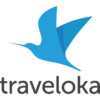
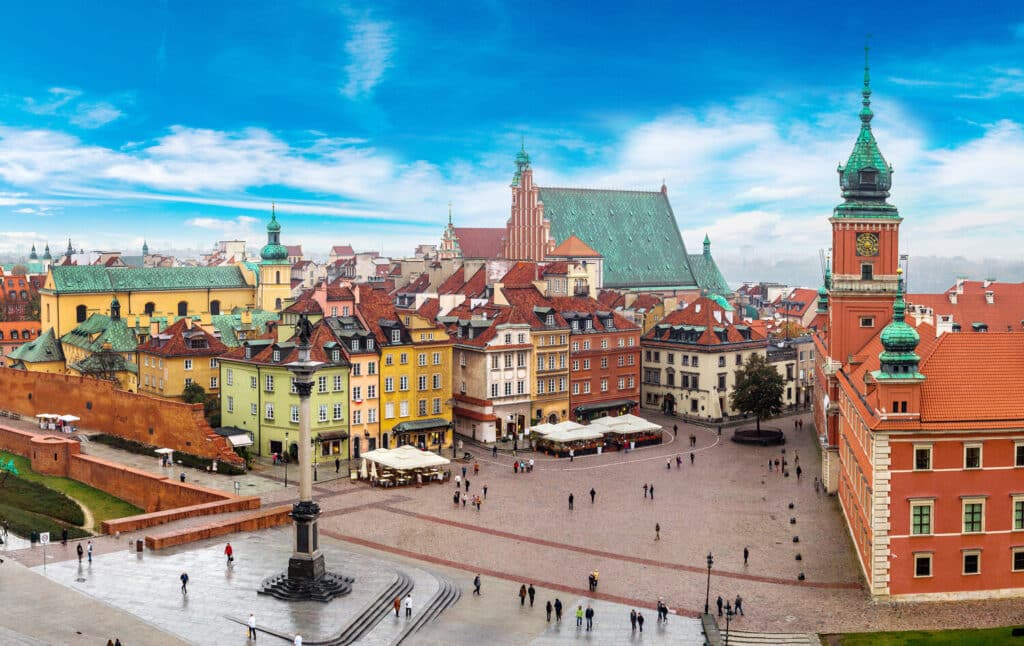
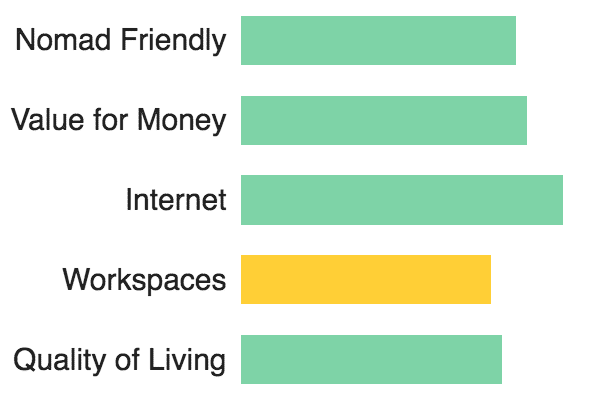
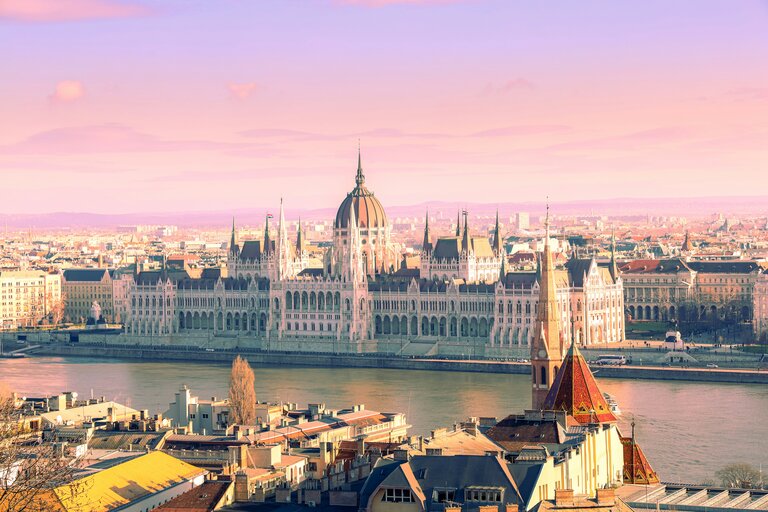
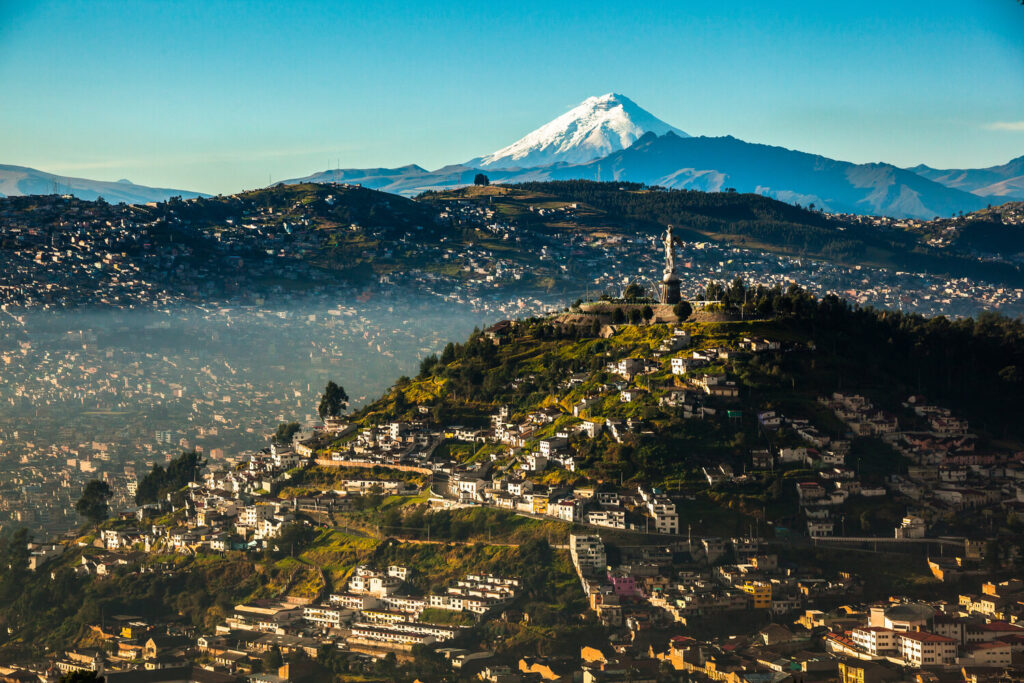
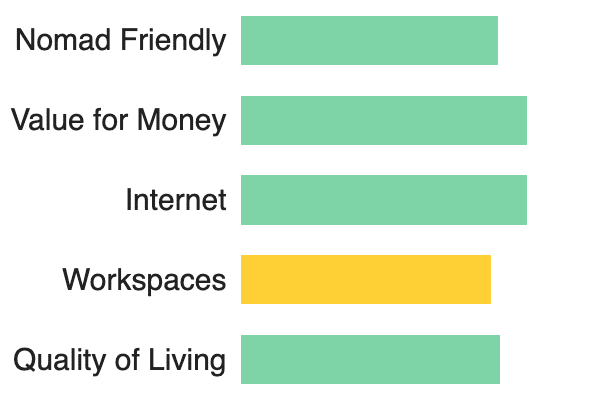
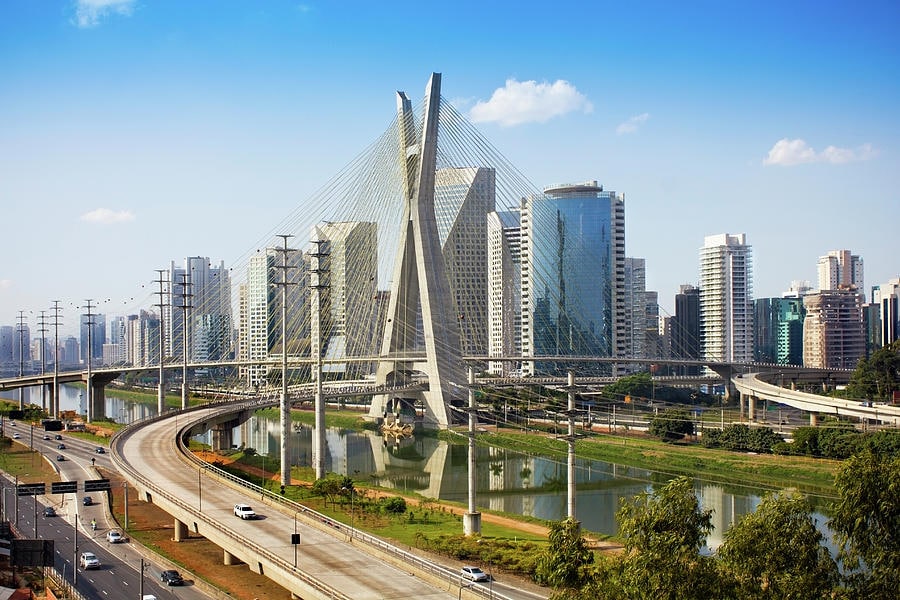
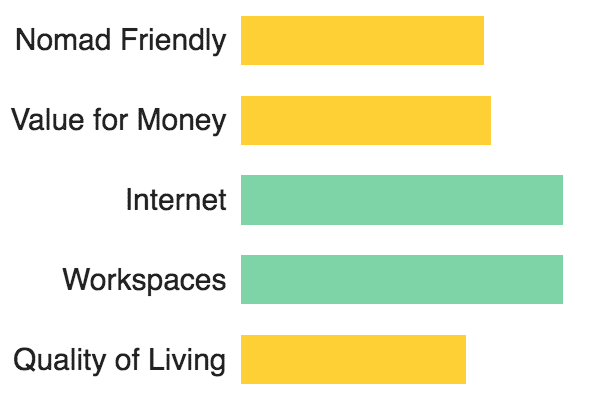
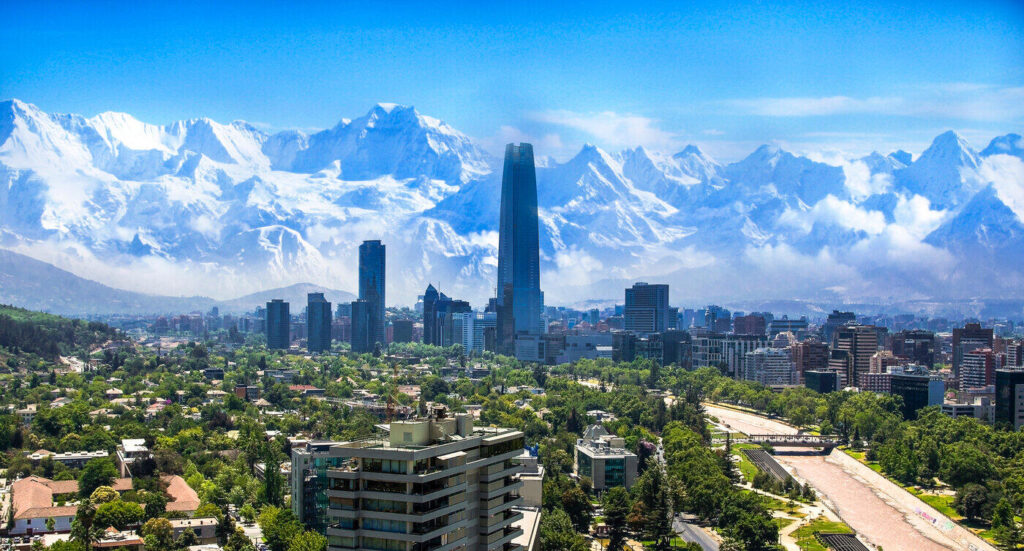
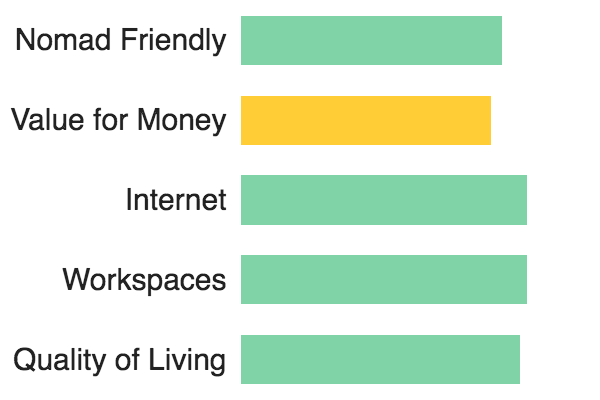

Responses